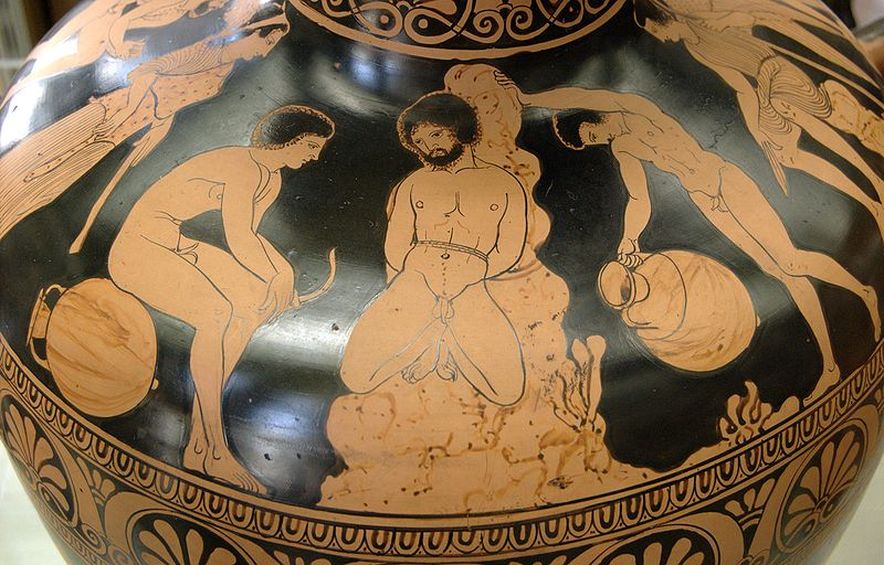AMYCUS

The Argonauts bind Amycus, red figure hydria, c. 425 BCE (Bibi Saint-Pol / Wikimedia Commons)
From Smith's Dictionary of Greek and Roman Biography and Mythology (1844):
A son of Poseidon by Bithynis, or by the Bithynian nymph Melia. He was ruler of the country of the Bebryces, and when the Argonauts landed on the coast of his dominions, he challenged the bravest of them to a boxing match. Polydeuces, who accepted the challenge, killed him. (Apollod. i. 9. § 20; Hygin. Fab. 17; Apollon. Rhod. ii. init.) The Scholiast on Apollonius (ii. 98) relates, that Polydeuces bound Amycus. Previous to this fatal encounter with the Argonauts, Amycus had had a feud with Lycus, king of Mysia, who was supported by Heracles, and in it Mydon, the brother of Amycus, fell by the hands of Heracles. (Apollod. ii. 5. § 9; Apollon. Rhod. ii. 754.) Pliny (//. N. xvi. 89) relates, that upon the tomb of Amycus there, grew a species of laurel (laurus insana), which had the effect that, when a branch of it was taken on board a vessel, the crew began to quarrel, and did not cease until the branch was thrown overboard.
Source: William Smith (ed.), The Dictionary of Greek and Roman Biography and Mythology, 3 vols. (Boston: Little, Brown, and Company, 1867).



